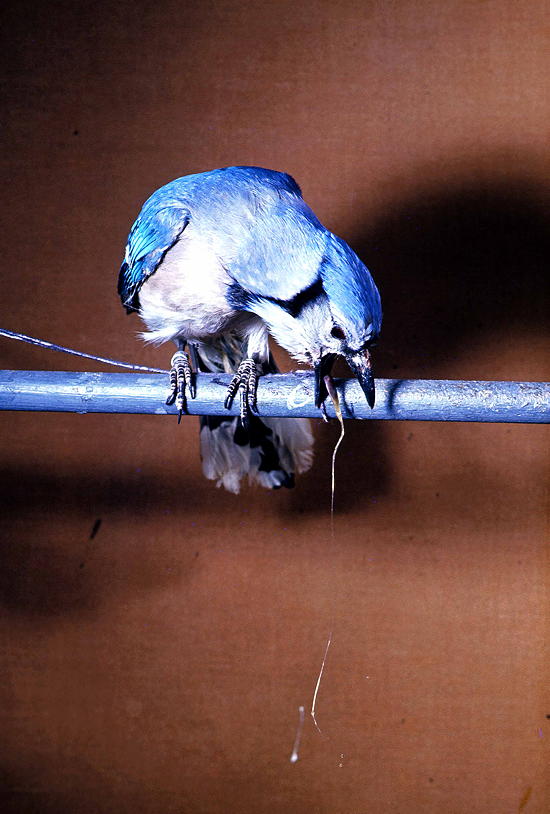Science
The Handy Dandy Evolution Refuter
Read online here.
Posted By: Paul - Sun Jul 14, 2019 -
Comments (4)
Category: Animals, Dinosaurs and Other Extinct Creatures, Antiques, Anachronisms and Throwbacks, Authorities and Experts, Eccentrics, Conspiracy Theories and Theorists, Curmudgeons and Contrarianism, Science, 1970s
Decapitation Experiment
Weird science: How long does a severed head remain conscious? In 1905, Dr Gabriel Beaurieux used the opportunity of the execution of the criminal Henri Languille by guillotine to attempt to find out. From a contemporary newspaper account of the scene:"Languille! Languille!"
Terrible stillness for a moment. And, look! The dead head actually obeys! The eyelids open, and two eyes, abundant with life, glare questioning at Dr. Beaurieux—and then the lids close.
But the doctor has no mercy—he is experimenting. And once more he commands:
"Languille!"
Again the eyelids open, and two soulless eyes attempt to see, to find a point in the space. A conscious struggle really is proceeding, until the lids again close. But for the third time Dr. Beaurieux raises the head up in the air:
"Languille!"
This time in vain. The experiment had lasted thirty seconds, and now the question is:
Has the reflecting movement released other functions of the brain? Did Languille know that they called him, and that he had better awaken and answer? Gruesome it were, if he really had answered, for instance repeated his "Goodbye, you beautiful life!"

The execution of Henri Languille - source: wikipedia

The Racine Journal Times - Aug 23, 1905
Posted By: Alex - Thu May 16, 2019 -
Comments (5)
Category: Death, Science, Experiments, 1900s
Hangovers Due to Guilty Conscience
In 1973, Professor Robert Gunn advanced this theory.
Twenty years later, he was still pursuing the idea, as you can see in the scientific paper at the link.
To reappraise a prior study of hangover signs and psychosocial factors among a sample of current drinkers, we excluded a subgroup termed Sobers, who report "never" being "tipsy, high or drunk." The non-sober current drinkers then formed the sample for this report (N = 1104). About 23% of this group reported no hangover signs regardless of their intake level or gender, and the rest showed no sex differences for any of 8 hangover signs reported. Using multiple regression, including ethanol, age and weight, it was found that psychosocial variables contributed independently in predicting to hangover for both men and women in this order: (1) guilt about drinking; (2) neuroticism; (3) angry or (4) depressed when high/drunk and (5) negative life events. For men only, ethanol intake was also significant; for women only, being younger and reporting first being high/drunk at a relatively earlier age were also predictors of the Hangover Sign Index (HSI). These multiple predictors accounted for 5-10 times more of the hangover variance than alcohol use alone: for men, R = 0.43, R2 = 19%; and for women, R = 0.46, R2 = 21%. The findings suggest that hangover signs are a function of age, sex, ethanol level and psychosocial factors.
Posted By: Paul - Sun Feb 10, 2019 -
Comments (1)
Category: Science, Experiments, Psychology, 1970s, 1990s, Pain, Self-inflicted and Otherwise, Alcohol
Discerning pig screams
Perhaps it's hard to tell whether it's the pigs or the humans screaming...
Source
Posted By: Alex - Tue Dec 18, 2018 -
Comments (2)
Category: Animals, Science
Strange Frequencies
Add this item to your Xmas list and you won't be disappointed!From the intro:

Posted By: Paul - Thu Oct 25, 2018 -
Comments (0)
Category: Science, Supernatural, Occult, Paranormal, Books
The Spilhaus Space Clock
This clock gives info on 19 different variables.For complete info, visit here.
The inventor's Wikipedia entry.

Posted By: Paul - Wed Oct 24, 2018 -
Comments (0)
Category: Nature, Science, Technology, 1960s, 1970s
Mystery Gadget 67

What's going on here?
The answer is at the link.
Or after the jump.
More in extended >>
Posted By: Paul - Wed Oct 17, 2018 -
Comments (5)
Category: Science, 1920s
The smell of dead rabbits
Weird science: Spanish researchers have determined that rabbits can differentiate between the poop of predators that have eaten rabbits and those that haven't. From New Scientist:There were fewer pellets in the plots sprayed with rabbit-based scat odour than in those sprayed with the beef-based scat odour, suggesting the rabbits were avoiding places where it appeared other rabbits were being eaten.
I assume this means that some researcher had to search around in a field every day to count rabbit pellets.
The journal article: Acta Ethologica
Posted By: Alex - Sat Oct 13, 2018 -
Comments (3)
Category: Animals, Science, Excrement
Verbal Flatulence
Clare Collins, a professor of nutrition at the University of Newcastle in Australia, has recently been making headlines for an article she wrote in The Conversation in which she claimed that if you hold in a fart too long some of it will eventually come out your mouth:To back up this claim she cites a 2010 article in the journal Digestive Diseases and Sciences, and this article does indeed say this:
However, it's hydrogen sulfide, H2S, that makes farts smell, and according to the article, this isn't excreted in your breath: "Once in circulation, H2S is excreted primarily by the kidneys as free or conjugated sulfate."
Posted By: Alex - Sat Oct 06, 2018 -
Comments (4)
Category: Science, Flatulence
Blue Jay Emetic Unit
As defined by biologist Lincoln Brower, a "blue jay emetic unit" is the amount of cardiac glycosides (a type of poison found in plants such as milkweeds) that will make one blue jay vomit. Brower determined the exact amount by putting cardiac glycosides into gelatin capsules which he force-fed to blue jays.The point of this was that various butterflies ate milkweeds and then became poisonous to the blue jays which, in turn, ate them. Knowing the exact amount of poison needed to make a blue jay vomit allowed Brower to rank each butterfly by its number of blue jay emetic units:
Source: Brower LP (Feb 1969). "Ecological Chemistry." Scientific American 220(2): 22-29.

"barfing blue jay" (picture by Lincoln Brower. Source: ScienceFriday.com)
Posted By: Alex - Wed Oct 03, 2018 -
Comments (3)
Category: Nature, Science, Experiments

| Who We Are |
|---|
| Alex Boese Alex is the creator and curator of the Museum of Hoaxes. He's also the author of various weird, non-fiction, science-themed books such as Elephants on Acid and Psychedelic Apes. Paul Di Filippo Paul has been paid to put weird ideas into fictional form for over thirty years, in his career as a noted science fiction writer. He has recently begun blogging on many curious topics with three fellow writers at The Inferior 4+1. Contact Us |




